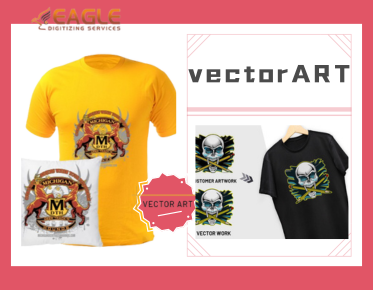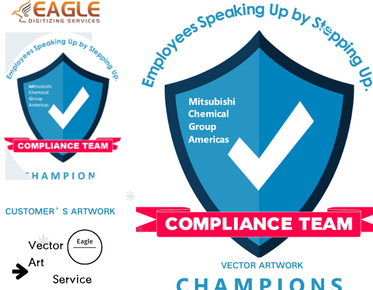Vectorizing Low-Resolution Images: Tips for Crisp Results
In the vibrant world of graphic design, clarity is paramount. Designers constantly grapple with the challenge of transforming images into striking visuals that convey messages effectively. However, what happens when you’re handed a low-resolution image, the kind that makes your heart sink? Fear not! This guide offers valuable insights and tips to navigate the murky waters of vectorization, ensuring that even the most pixelated images can be reborn as clear graphics. Let’s dive into the journey from blurry to brilliant.
The Importance of Resolution in Graphics
Resolution is the lifeblood of digital imagery. It dictates how many pixels make up an image, directly influencing the level of detail and sharpness. High-resolution images boast crisp lines and vibrant colors, allowing for clear reproduction across various mediums. Conversely, low-resolution images tend to resemble abstract paintings—fuzzy and often devoid of important details. Understanding this fundamental aspect is crucial for any designer seeking to produce professional-grade graphics.
The Challenges of Working with Low-Resolution Images
Why Low Resolution Can Be a Pain
Low-resolution images present a myriad of challenges. They lack the necessary detail to stand up to scrutiny, often resulting in jagged edges and smudged colors. When attempting to vectorize, these limitations become painfully apparent. A low-res image can feel like a riddle with no answer, leaving designers frustrated and disheartened. Yet, armed with the right techniques, it’s possible to unlock the hidden potential within these images.
Common Issues Faced During Vectorization
As you embark on the vectorization journey, you may encounter issues such as loss of detail, inaccurate color representation, and complicated shapes that defy simplification. These hurdles can transform a simple project into an arduous task. It’s essential to recognize these challenges early on so you can devise strategies to mitigate them.
Assessing Your Low-Resolution Image
Evaluating Image Quality: What to Look For
Before diving headfirst into vectorization, take a moment to assess your low-resolution image. Look for defining characteristics such as shapes, outlines, and colors that stand out despite the pixelation. Identifying these key elements is vital; they serve as the foundation upon which you will build your vector masterpiece.
Identifying Key Elements to Retain in Vectorization
Not all aspects of a low-resolution image are worth saving. Focus on the elements that embody the essence of the design. Whether it’s a striking silhouette, a vivid color splash, or unique patterns, pinpoint these features for preservation. By doing so, you can maintain the spirit of the original image while enhancing clarity through vectorization.
Choosing the Right Tools for Vectorization
Software Options: Which One is Right for You?
With a plethora of software available, choosing the right vectorization tool can be daunting. Popular choices include Adobe Illustrator, CorelDRAW, and Inkscape, each offering unique features suited to different skill levels and project needs. Take the time to explore these options; the right software can streamline your workflow and elevate your results.
Online vs. Offline Tools: Pros and Cons
The choice between online and offline tools presents another layer of complexity. Online platforms often offer quick and accessible solutions, perfect for those on the go. However, offline tools typically provide a richer feature set and greater control. Evaluate your specific requirements and decide which option best aligns with your workflow and project goals.
Preparing Your Image for Vectorization
Cleaning Up Your Image: Basic Editing Techniques
Before vectorizing, it’s essential to clean up your image. Simple editing techniques can make a world of difference. Adjust brightness and contrast to enhance visibility, and consider using filters to reduce noise. This preliminary step prepares your image for a smoother vectorization process, allowing for greater clarity and precision.
Cropping and Resizing: Getting the Right Dimensions
Cropping away unnecessary elements and resizing your image to the desired dimensions is crucial. This step not only declutters the visual but also ensures that the focus remains on the most important components. A well-cropped image sets the stage for a more successful vectorization, preventing distractions from overshadowing your design.
Using Image Upscaling Techniques
Upscaling Basics: How to Make Low-Res Images Bigger
Upscaling involves increasing the dimensions of your image to improve its overall quality. However, the process is not as simple as it appears. Simply enlarging a low-resolution image often leads to further pixelation and blurriness. Employing sophisticated techniques can aid in achieving a more visually appealing outcome.
AI-Based Upscaling Tools: Are They Worth It?
In recent years, AI-based upscaling tools have gained popularity, promising to enhance image quality dramatically. These tools analyze your low-res images and predict what higher resolution might look like, effectively adding detail where there was none. While they can be a game-changer, it’s crucial to approach them with a discerning eye—results can vary significantly based on the original image’s quality.
Choosing the Right Format for Vectorization
Best File Formats for Low-Resolution Images
When preparing for vectorization, selecting the appropriate file format is critical. Formats such as JPEG and PNG are common for low-resolution images, but they come with their drawbacks. JPEGs often suffer from compression artifacts, while PNGs can retain background transparency but lack sufficient detail. Opting for TIFF or BMP formats may yield better results when vectorizing, as they preserve more information.
Understanding the Differences Between Raster and Vector Files
It’s essential to grasp the distinction between raster and vector files. Raster files, composed of pixels, are resolution-dependent; scaling them up leads to a loss of quality. Conversely, vector files are made of paths defined by mathematical equations, allowing for infinite scalability without loss of detail. This fundamental difference underscores the importance of converting low-res images into vector formats for clarity.
Step-by-Step Guide to Vectorizing Low-Resolution Images
Importing Your Image into Vector Software
Once your image is prepped, it’s time to import it into your chosen vector software. Ensure that the resolution settings align with your project requirements. This step is crucial for maintaining the integrity of your original image as you transition into vectorization.
Tracing Techniques: Manual vs. Automatic Tracing
Tracing is at the heart of vectorization. You can choose between manual and automatic tracing techniques. Manual tracing offers greater control, allowing for intricate adjustments to paths and shapes. Automatic tracing, while faster, may yield less precise results. Consider the complexity of your image and your comfort level with each technique before deciding.
Editing the Vector Image for Clarity
Refining Paths and Shapes for Clean Lines
Once your image is vectorized, take the time to refine the paths and shapes. This process is essential for achieving clean lines and smooth curves. Zoom in closely to ensure that every detail aligns with your design vision. A well-refined vector image is a hallmark of professionalism and attention to detail.
Adjusting Colors and Gradients for Impact
Color is a powerful tool in graphic design, and adjusting colors and gradients can significantly impact your vector image. Experiment with hues, saturation, and gradients to create depth and dimension. Strive for a palette that resonates with your message and elevates your design to new heights.
Working with Layers for Enhanced Clarity
The Importance of Layering in Vector Graphics
Layering is a fundamental technique that enhances the organization and clarity of your vector graphics. By separating different elements into individual layers, you can easily manage complex designs and make adjustments without affecting the entire composition. This approach fosters a more streamlined workflow, allowing for greater creativity and flexibility.
How to Use Layers to Improve Image Quality
To improve image quality, leverage layers effectively. Use them to separate foreground and background elements, facilitating easier manipulation. Group similar elements together to maintain order, and utilize adjustment layers to refine colors and effects without permanently altering the original vector shapes.
Testing Your Vectorization Results
How to Check for Clarity and Detail
After editing, it’s time to scrutinize your vector image. Zoom in and evaluate the clarity of lines, shapes, and colors. Look for any inconsistencies or areas that may require further refinement. This critical assessment ensures that your vectorization efforts have yielded the desired results.
Making Adjustments: What to Look For
Adjustments may be necessary after the initial review. Focus on areas with jagged lines, poorly defined shapes, or inconsistent color applications. Make subtle changes to enhance clarity and ensure that every detail contributes to the overall quality of the graphic.
Exporting Your Final Vector Image
Best Practices for Saving Vector Files
When exporting your final vector image, adhere to best practices to ensure compatibility and maintain quality. Always save a copy in the native format of your software to preserve editable layers and paths. Additionally, export versions in popular formats such as SVG or PDF for versatile use across various platforms.
Choosing the Right File Format for Your Needs
Choosing the right file format for your final export is essential. SVG is ideal for web applications, offering scalability without quality loss. For print projects, PDF provides a robust option that retains vector properties. Assess your intended use and select a format that aligns with your project’s goals.
Troubleshooting Common Vectorization Issues
What to Do When Your Vector Looks Blurry
If your vector image appears blurry after vectorization, revisit your tracing settings and resolution. It may be necessary to adjust the tracing parameters or refine the paths further. Pay attention to any overlapping elements that could contribute to the muddiness of the image.
Fixing Overly Complicated Paths: Simplifying Shapes
Overly complicated paths can complicate the editing process and detract from image clarity. Take the time to simplify these shapes by reducing anchor points and eliminating unnecessary detail. A cleaner, more straightforward design often leads to a more professional appearance.
Preserving Detail in Complex Images
Strategies for Handling Intricate Designs
Complex images demand a strategic approach to vectorization. Break down the design into manageable sections, tackling one element at a time. This method allows for meticulous attention to detail, ensuring that no vital components are overlooked in the process.
When to Accept Limitations: Knowing When to Stop
Sometimes, despite our best efforts, certain low-resolution images may present insurmountable challenges. Knowing when to accept limitations is a skill in itself. If the vectorization process compromises clarity or distorts essential features, it may be time to reassess the project. Embracing the imperfections can be a necessary step toward creative growth. In case this post has sparked your enthusiasm for vector conversion in USA and you wish to know more details, please feel free to get in touch with us.
Mastering the art of vectorization, especially with low-resolution images, is a journey filled with challenges and triumphs. Celebrate your accomplishments along the way, no matter how small. Each successful project contributes to your growth as a designer, reinforcing the importance of practice and perseverance.



